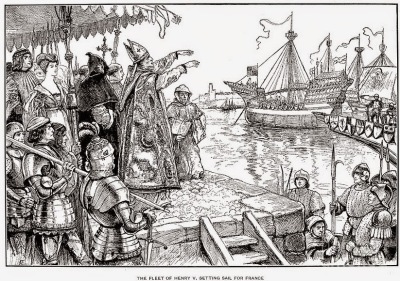The determining factor in Anglo-Welsh relations was the will of the Crown. The creation of a March was a useful expedient for the Norman kings, but their will always underpinned it. The tide of conquest ebbed and flowed with “strong” and “weak” English kings. When Henry II decided to come to terms in 1172 he ushered in a long period of relative stability, while the fate of the Braose under John shows how aware the English kings were of the risks of a formidable military power emerging amongst the Marchers. When the royal will was turned against Wales, it was evident that the superior wealth of England provided larger and better-equipped armies with large cavalry forces, and it was only the land and weather that frustrated them. The Welsh reacted quickly to the Norman weapons of castle, cavalry and crossbow, and by 1094 had established means of dealing with them; furthermore, they had their own tradition of archery. What is striking is the extent to which English progress depended upon command of the sea, and Gerald of Wales clearly recognized its importance. Many of the key centres of Marcher power – notably Kidwelly, Carmarthen and Pembroke – were on or accessible to the sea. According to Welsh tradition, Robert FitzHamon began the conquest of Glamorgan by a landing from the sea at Portkerry in 1093. Hugh of Shrewsbury was killed by Magnus Barefoot of Norway and his fleet off Anglesey. In 1114, Henry I supported his invasion with ships, while the Welsh paid for a Danish fleet to support their attack on Cardigan castle in 1135. Henry II used fleets to attack Anglesey and North Wales in 1157 and 1165, while shipborne forces from Ireland helped Henry III in the war that led up to the Treaty of Woodstock of 1247. Edward I used a fleet to great effect in his conquest of Wales, and the great castles that he built to enforce his conquest are by the sea and often have ports.
Scotland was another peripheral area, but here conditions were very different. The North of England required a brutal military subjugation, and Norman rule there long consisted of little more than a series of embattled outposts beyond the Humber. Here, it was hardly possible to establish predator landlords with a vested interest in conquest. Any such development was effectively forestalled, because the kings of Scotland recognized the utility of reorganizing their kingdom and they invited in Norman barons, who were often established landowners in England – to the great chagrin of many of the native chieftains. Scotland was not as inviting a prospect as Wales for the Norman predators. But the issue between the kings of the two lands was the March, for both laid claim to Cumbria and Northumberland. It was to settle this point that in 1072 William the Conqueror led a great raid up the east coast, supported by a fleet, and received the homage of Malcolm Canmore at Abernethy. But this was inconclusive, and in 1080 Robert Curthose led another Norman attack and received another submission, but founded Newcastle – a significant advance of the Norman frontier, which Rufus extended yet further by the establishment of a castle at Carlisle in 1092. Normanization then proceeded apace in Scotland, and Henry I married a Scottish princess, bringing peace between the two lands.
